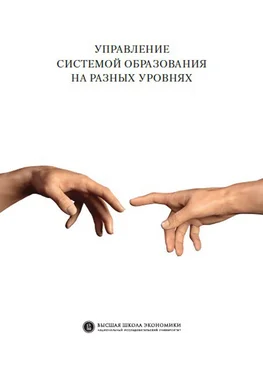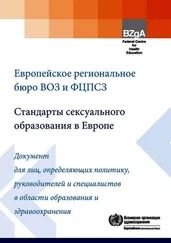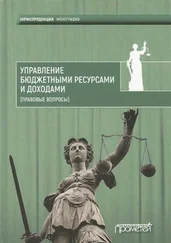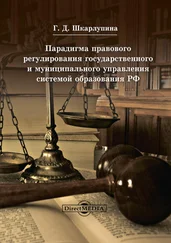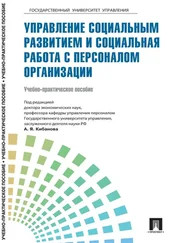Полномочия местных органов власти в образовании
Согласно Конституции местные органы власти выполняют публичные задачи, не закрепленные Конституцией или законами за другими государственными органами [129] Konstytucja Rzeczypospolitej Polskiej. Art. 164 // Dz.U. 1997 nr 78 poz. 483.
Конец ознакомительного фрагмента.
Текст предоставлен ООО «ЛитРес».
Прочитайте эту книгу целиком, купив полную легальную версию на ЛитРес.
Безопасно оплатить книгу можно банковской картой Visa, MasterCard, Maestro, со счета мобильного телефона, с платежного терминала, в салоне МТС или Связной, через PayPal, WebMoney, Яндекс.Деньги, QIWI Кошелек, бонусными картами или другим удобным Вам способом.
Marks G. Structural Policy and Multi-level Governance in the EC // Cafruny A., Rosenthal G. (eds). The State of the European Community: The Maastricht Debate and Beyond. Boulder, Colorado: Lynne Rienner, 1993. P. 391–411.
Rodrigo D., Allio R., Andres-Amo P. Multi-level Regulatory Governance: Policies, Institutions and Tools for Regulatory Quality and Policy Coherence // OECD Coherence, OECD Working Papers on Public Governance. No. 13. OECD Publishing, 2009.
United Nations, Resolution adopted by the General Assembly on 25 September 2015. United Nations General Assembly, p. 267. (аccessed: 15 March 2019).
Ibid. P. 353.
Ibid. P. 360.
Multi-level Governance of Innovation and Smart Specialisation. Baltic-TRAM, 2017. P. 11.
Committee of the Regions. The Committee of the Regions on Multi-level Governance. CDR 89/2009.
Впервые была издана в 2009 г.
Wilkoszewski H., Sundby E. Steering from the Centre: New Modes of Governance in Multi-Level Education Systems // OECD Education Working Papers. 2014. No. 109. Paris: OECD Publishing. P. 34.
Chou M.-H., Jungblut J., Ravinet P., Vukasovic M. Higher Education Governance and Policy: An Introduction to Multi-issue, Multi-level and Multi-actor Dynamics // Policy and Society. 2017. Vol. 36. No. 1. P. 1–15.
De Prado C. Global Multi-level Governance: European and East Asian leadership. New York: United Nations University press, 2007. P. 275.
De Prado C. Global Multi-level Governance: European and East Asian leadership. New York: United Nations University press, 2007. P. 275.
Chou M.-H., Gornitzka A. Building a European knowledge area: An introduction to the dynamics of policy domains on the rise // Chou M.-H., Gornitzka A. Building the Knowledge Economy in Europe: New Constellations in European Research and Higher Education Governance. Cheltenham: Edward Elgar, 2014. P. 1–26; Chou M.-H., Jungblut J., Ravinet P., Vukasovic M. Multi-level, Multi-actor and Multi-issue Dimensions of Governance of the European Higher Education Area, and Beyond // European Higher Education Area: The Impact of Past and Future Policies. Springer, Cham, 2018. P. 321–334.
Follesdal A., Wessel R., Wouters J. Multi-level Regulation and the EU: the Interplay between Global, European and National Normative Processes. Leiden, The Netherlands: MartinusNijhoff Publishers, 2008.
Прага (2001 г.), Берлин (2003 г.), Берген (2005 г.), Лондон (2007 г.), Левен / Лувен-ла-Неве (2009 г.), Будапешт / Вена (2010 г.), Бухарест (2012 г.), Ереван (2015 г.) и Париж (2018 г.).
De Ridder-Simoens H. History of the Universities in Europe. Cambridge Press, 1996.
Russian Federation – Country Note – Education at a Glance 2018: OECD Indicators. (accessed: 15 March 2019).
De Groof J., Neave G., Svec J. Democracy and Governance in Higher Education, Kluwer Law International, Den Haag. Council of Europe, 1998; Berka W., De Groof J., Penneman H.A. Autonomy and Education. Yearbook of the European Association for Education Law and Policy. The Hague, 2000.
The White Paper on Education and Training – «Teaching and Learning» (Commission of the European Communities, Brussels, 1995) констатировала: «Опыт показывает, что большинство децентрализованных систем также являются наиболее гибкими и, следовательно, имеют наибольшую склонность к развитию новых форм социального партнерства».
Perspectieven Voor het Internationaal Onderwijsrecht (Prospects for International Educational Law) // Journal for Education Law and Policy. 1993–1994. No. 2.
Scott P. Unified and Binary Systems of Higher Education in Europe // Burgen A. (ed.) Goals and Purposes of Higher Education in the 21st Century. Higher Education Policy Series 32. London, 1996. P. 49.
Trends in Learning Structures in Higher Education, Established Jointly by the Confederation of European Union Rector's Conferences and the Association of European Universities (CRE). Part I by Haug G. Main Trends and Issues in Higher Education Structures in Europe; Part II by Kirstein J. Information on Learning Structures in Higher Education in the EU/EEA Countries, Both Parts of the Project Report: Trends in Learning Structures in Higher Education. ESIB, 1999.
UNECTEF v Heylens [1987] ECR 4097. Пар. 13.
Judgment of the Court of 31 March 1993. Case C-19/92, Kraus [1993] ECR p. I-1663.
Leenknegt G. Subsidiarity and European Integration. Zwolle, 1995. P. 93.
De Groof J., Friess B. Opportunities and Limitations for a European Education Policy // European Journal for Education Law and Policy. 1997. P. 9; Lenaerts K. Subsidiarity and Community Competence in the Field of Education // De Groof J. (ed.) Subsidiarity and Education. Aspects of Comparative Educational Law. Leuven, 1994. P. 129–131.
Burns T., Köster F. (eds.) Governing Education in a Complex World. Paris: OECD Publishing, 2016.
Charbit C. Governance of Public Policies in Decentralised Contexts: The Multilevel Approach // OECD Regional Development Working Papers. No. 04. Paris: OECD Publishing, 2011; Charbit C., Michalun M. Mind the Gaps: Managing Mutual Dependence in Relations Among Levels of Government // OECD Working Papers on Public Governance. No. 14. Paris: OECD Publishing, 2009.
Читать дальше
